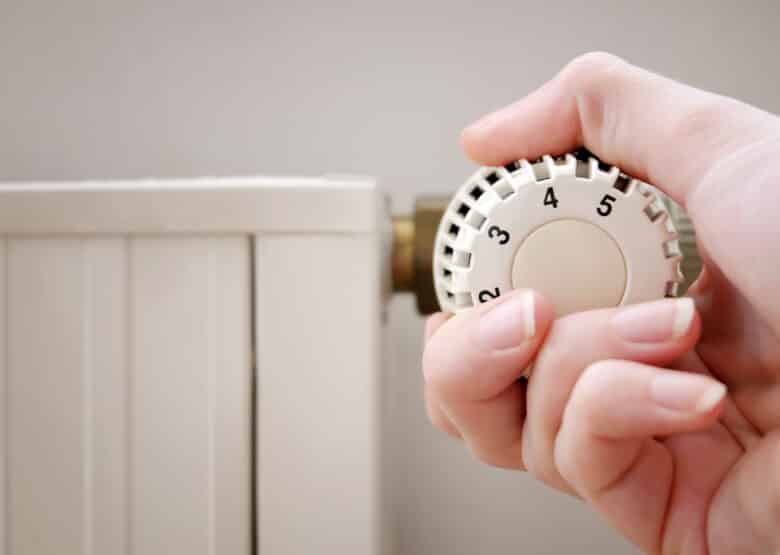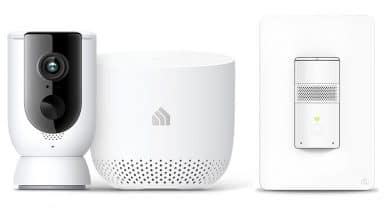
Food, everyday necessities and energy – in recent months, the cost of essential goods has risen rapidly. Exceptional conditions such as war and inflation are to blame. Naturally, many consumers are asking themselves how to effectively cut costs. A good place to start is heating. If you change your radiator thermostat, you can save many euros. How to make the switch to a smart thermostat, we explain to you in the following.
Change radiator thermostat: Save the environment and your wallet
If you do not live in a new building, your radiators most likely still have conventional thermostats. Here you always have to change the temperature yourself. Sometimes this can be a real test of patience. After all, many people find their homes too cold or too warm due to inaccurate heating settings. It’s particularly annoying when the apartment is warm even though you’re not at home. A classic example is absence due to work. If you are sitting at the breakfast table in the morning before work starts, you might freeze and turn up the heating. Experience shows that this takes a few minutes to get going. Finally, you leave for work and the apartment only warms up when you are away. The hours you spend at work, your own four walls are heated senselessly.
But this does not have to be. We have a tip on how you can save not only your wallet, but also the environment. And that’s with the help of an electronic thermostat. This allows you to heat your home efficiently and individually. Let’s take another look at the example. With an electronic thermostat you can regulate what temperature the room should be at what time of day. The thermostat itself then decides on the right level by measuring the outside temperature. Furthermore, you can set different “heating periods”. So that you are already sitting in a warm apartment at breakfast, the thermostat already regulates your heating up when you are still slumbering peacefully in bed.
If you leave the apartment, the thermostat will then turn the heating down again. Within the heating plans you can regulate not only desired temperatures and times. On top of that, the whole thing can usually be divided into weekdays. This allows you to conveniently set different times for the weekend or home office days. Modern thermostats often even allow convenient control via the corresponding app. Models like the AVM FRITZ!DECT 301 (test) show just how well this works. This targeted heating not only saves costs, but also ensures greater living comfort on top of that. After all, the smart thermostat ensures on its own that it is just as warm in your home as you want it to be.
Change radiator thermostat: classic thermostat
For laymen, radiators along with the associated thermostat are a book with seven seals. It is a great advantage to know how it works. Then you can also better understand why a change makes sense. Regardless of whether you have a classic thermostat or a modern, electronic thermostat, the task of the device is identical. Thus, a thermostat is supposed to take care of regulating the amount of hot water that circulates through your radiator. The differences lie rather in the operation of the thermostat.
Classical thermostat
A standard thermostat has a large control dial, which usually has five different heating levels. The higher the level, the more heating water is directed into the radiator. Each number corresponds to a certain temperature. Level 3 is the average value and usually means 20°C. A liquid inside the thermostat is used as the basis for calculating the room temperature. This expands or contracts depending on the ambient temperature. Expansion of the liquid causes a pin between the thermostat and the radiator to be actuated, which regulates the inflow of heating water. Let’s stay with the example of 20°C. Should you have set the heating level 3 with the thermostat and the room temperature is close to 20°C, the thermostat will register this and the pin will remain in neutral position.
In turn, at a room temperature of 22°C, the liquid expands. As a result, the pin is pressed and the inflow is reduced. Conversely, a temperature of 18°C would cause the fluid to contract, the pin to retract, and the inflow of heating water to be released. What effect the room temperature has on the heating behavior of the thermostat depends, of course, on the particular stage. This can also be seen when turning the thermostat. Turning it up increases the space for the liquid. Turning it down, on the other hand, narrows the space. In this way, you can actively influence the temperature of the room. However, since this method is now several decades old, consumers are increasingly turning to electronic thermostats. How these work, we want to explain to you now.
Electronic thermostat
The initial situation is also with the electronic thermostat comparable to that of a standard thermostat. The linchpin is also here the pin, which sits between thermostat and radiator. After all, the flow rate of the heating water is regulated via this pin. However, the communication between the thermostat and the user is completely different. You don’t get a control dial here. Instead, the desired temperature can be conveniently set via a display. The electronic thermostat does the rest. The heart of the thermostat is not a liquid, but a motor and integrated thermometer. The latter lets the thermostat measure the room temperature, which is the basis for regulating the transition pin. Depending on the desired temperature you set, the motor turns the valve open or closed.

Accordingly, the pen is more or less pressed. The one small disadvantage that electronic thermostats have can already be gleaned from their name. Thus, they need electronic energy to work. As a rule, you use batteries here. But that doesn’t always have to be the case. Some manufacturers already offer their products as a self-sufficient solution. This is where so-called energy harvesting comes into play. Here, the thermostat generates ambient energy and uses it to operate without a battery or rechargeable battery. Since the models with battery constraint, however, offer a surprisingly good endurance, you can access here without hesitation.
Change radiator thermostat: The agony of choice
A change of the thermostat is due at the latest when the old model gives up the ghost. Now, of course, the question arises whether you should again reach for the standard model or a smart counterpart. As is often the case in life, this question cannot be answered in a general way. It rather depends on what requirements you place on a thermostat. For example, if you don’t mind regulating the temperature using the classic step system rather than precise temperature input, you can stick with a mechanical thermostat. But regardless of the smart features and the high level of user comfort, electronic thermostats also offer great savings potential. After all, you can use them for much more targeted heating. The alternative would be to sit permanently at the classic thermostat and adjust the temperature to your liking.
However, not all electronic thermostats are the same. Meanwhile, the market is bulging with the most diverse models. The category can be roughly divided into thermostats with and without smart home features. The devices without smart home functions usually have a large display and a few buttons that you can use to make entries. In particular, you can skillfully regulate heating times and temperature here. Once set, the electronic thermostat regulates the valve fully automatically. You get even more user comfort with a smart thermostat. This is integrated into your home network, which allows remote access. You’re coming back from vacation and want to preheat your apartment for your arrival? Then you can do this conveniently via the appropriate app on your smartphone. Strictly speaking, smart thermostats thus enable control from anywhere with an Internet connection.
Change radiator thermostat: more features = higher price
The smart features, which thermostats now have to offer, are in part really impressive. After all, they have long exceeded the mere possibility of remote control. Some models, for example, come with a matching window sensor. If you are ventilating your home, the sensor detects this and sends the information to the thermostat. To prevent unnecessary heating and costly energy waste, the smart thermostat now turns down the heating. When the window is closed again, the heating is turned up again. Door sensors open up similar possibilities. Here you can specify that the room temperature should rise when you come home. Conversely, the heating is automatically turned down when you leave the apartment.

Basically, however, you should ask yourself whether you really want to actively use such features. After all, more functions also mean a higher price. Especially if you want to equip your entire house with thermostats, flagship models can cost several hundred euros. Until this expenditure is amortized again, some heating periods have to go by. If you want to actively use the features, we strongly advise you to choose a premium model. After all, using the smart features can save you a lot of money on heating costs. The smart thermostat from AVM costs 44.00 euros. A fair price!
Change radiator thermostat: The installation
Should you want to change your radiator thermostat, you do not have to be afraid in advance. Even laymen can perform this without any problems. However, you should consider a few points to ensure your safety. For the change itself you need to calculate no more than 5 minutes of working time. If you want to change several devices, the time will be reduced from thermostat to thermostat as you get used to it. To minimize the risk of injury, be sure to let the heater cool down before changing it. That means you’ll turn the old thermostat to the 0 setting. While the heater is cooling down, you can start gathering the necessary tools. Since this is not a big challenge, a simple pipe wrench is sufficient. Once the heating is cold, you can start. Simply proceed as follows:
- Set the old thermostat to stop, so that it is at the highest level. This is to ensure that the pin does not interfere with the disassembly.
- Take the pipe wrench to hand and loosen the ring with which the thermostat was attached to the radiator. Here the following applies: After tight comes loose! So perform slight movements with the pipe wrench to avoid damage. Turn counterclockwise.
- If the ring is loose, you take off the old thermostat.
- Now check the condition of the transmission pin. Can it be moved smoothly or is it instead rigid and immobile? If the pin does not move or moves only with difficulty, you should consult an expert. After all, it should be replaced because it can no longer do its job properly. The result is a too cold radiator.
- Now take the new thermostat to hand and turn this up to maximum level.
- Set it on the transmission pin and turn it first by hand on the radiator.
- Use for the further tightening now your pipe wrench. Make sure, however, again that you do not turn too tightly.
- Now make the desired settings on the thermostat.
Conclusion: Change to smart thermostat worthwhile
If you want to change your radiator thermostat, you will not only benefit from a higher user and living comfort. On top of that, you save a lot of money and also protect the environment. However, it doesn’t have to be the most expensive smart home thermostat. Even inexpensive models with temperature and heating time input on the device itself are sufficient to effectively reduce energy costs. However, if you’re a smart home fan and don’t want to do without remote access, we recommend an electronic thermostat with an Internet connection. Regardless of whether you choose a classic thermostat or a modern electronic model, as a tenant you should keep one important point in mind. Be sure to keep the old thermostat of the heating system. After all, the heating system is not your property. On top of that, you’ll also want to benefit from the cost-saving and sometimes extremely smart heating options in your new apartment.







No replies yet
Neue Antworten laden...
Gehört zum Inventar
Beteilige dich an der Diskussion in der Basic Tutorials Community →